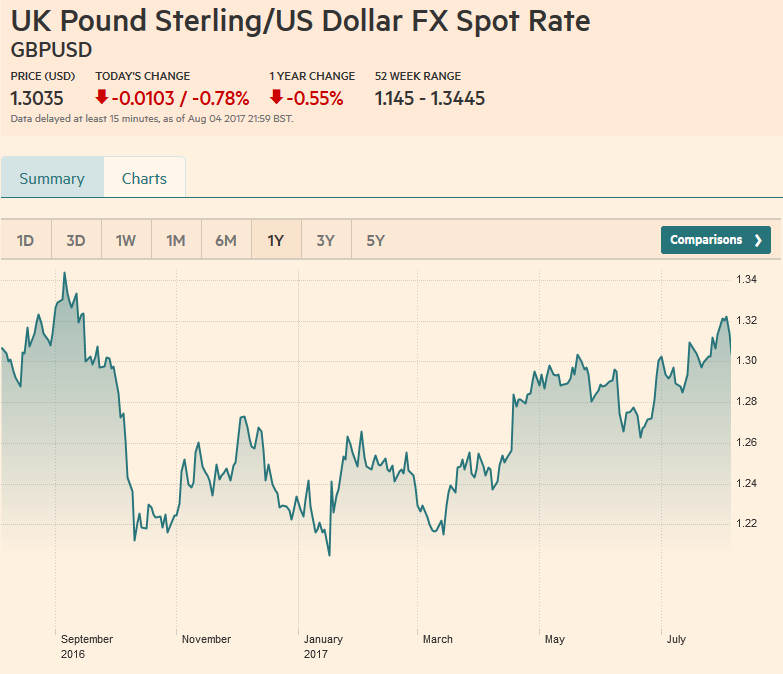| Sterling reached a new 11-month high against the dollar earlier today, but the dovish take away from the Bank of England has seen sterling reverse lower. It has now fallen below the previous day’s low, and a close below there (~$1.3190) would confirm the bearish key reversal pattern. Support near the week’s low just below $1.3100 is holding, and if that goes, the $1.30 level can be tested. A break of $1.2930, the low from the second half of July needs to yield signal a more significant correction.
Sterling has been sold across the board, and it is particularly pronounced against the euro. After bumping against GBP0.90 for the past two weeks, the euro shot through and quickly raced toward GBP0.9050. The Bank of England voted 6-2 to keep rates steady. Haldane, who previously had indicated that it was a close call from him at the last meeting, stuck with the majority. The Bank of England returns to full staff at the September meeting. |
UK Pound Sterling/US Dollar FX Spot Rate, August 2017(see more posts on GBP/USD, ) Source: markets.ft.com - Click to enlarge |
The BOE trimmed its growth forecasts but not its inflation forecast. This year’s growth forecast was pared to 1.75% from 1.9%, and 2018 growth was shaved to 1.6% from 1.7%. It is important to note that the composition of growth is seen changing. More growth is expected to come from exports and less from consumption, and wage growth is now expected to be slower than it anticipated in May. It appears that the market is pushing back the first hike from August next year until November. The BOE expects inflation to peak in October at 3%. Carney specifically singled out the past decline in sterling as the “sole cause” of the higher CPI.
The BOE’s Term Funding Scheme (TFS) will continue to run through February. Reports suggest the strong demand has prompted Chancellor of the Exchequer Hammond to agree to provide another GBP15 bln in lending by banks. The program was announced last August and had been originally planned to conclude at the end of February 2018. Banks have borrowed GBP78 bln in this four-year low rate facility. They are projected to borrow GBP115 bln, about GBP15 bln more than previously expected. This is tantamount to a small easing.
It seems a bit of a stretch to say that “The Bank of England joined other major central banks Thursday in signaling that a long era of easy money is gradually drawing to a close,” as a journalist concluded. The central bank did say that IF the economy performed as in line with the BOE forecasts, that it would have to raise rates more than the market is currently discounting. Note the that BOE is forecasting a smooth exit from the EU.
Next week the UK reports June industrial production and trade figures. Industrial output is expected to have fallen again. It rose only once this year, and that was in April (0.2%) after falling 0.5% in March. The visible (merchandise) trade balance has deteriorated illustrated by downward trending three, six,m and 12-month averages since the start of last year. The J-curve effect is also probably operative. The merchandise deficit should stabilize.
Full story here Are you the author? Previous post See more for Next post
Tags: #GBP,#USD,$EUR,Bank of England,British Pound,newslettersent









































